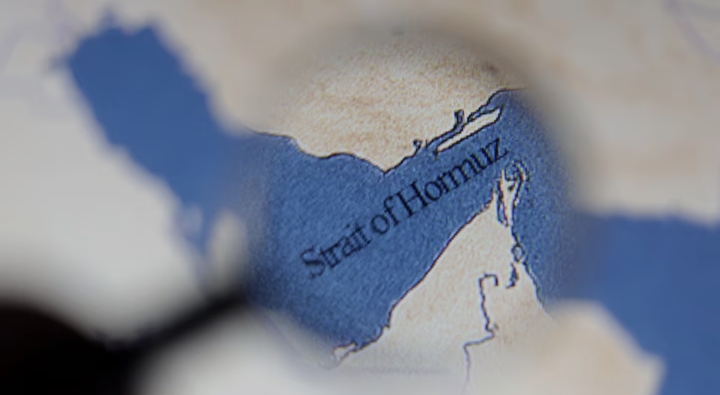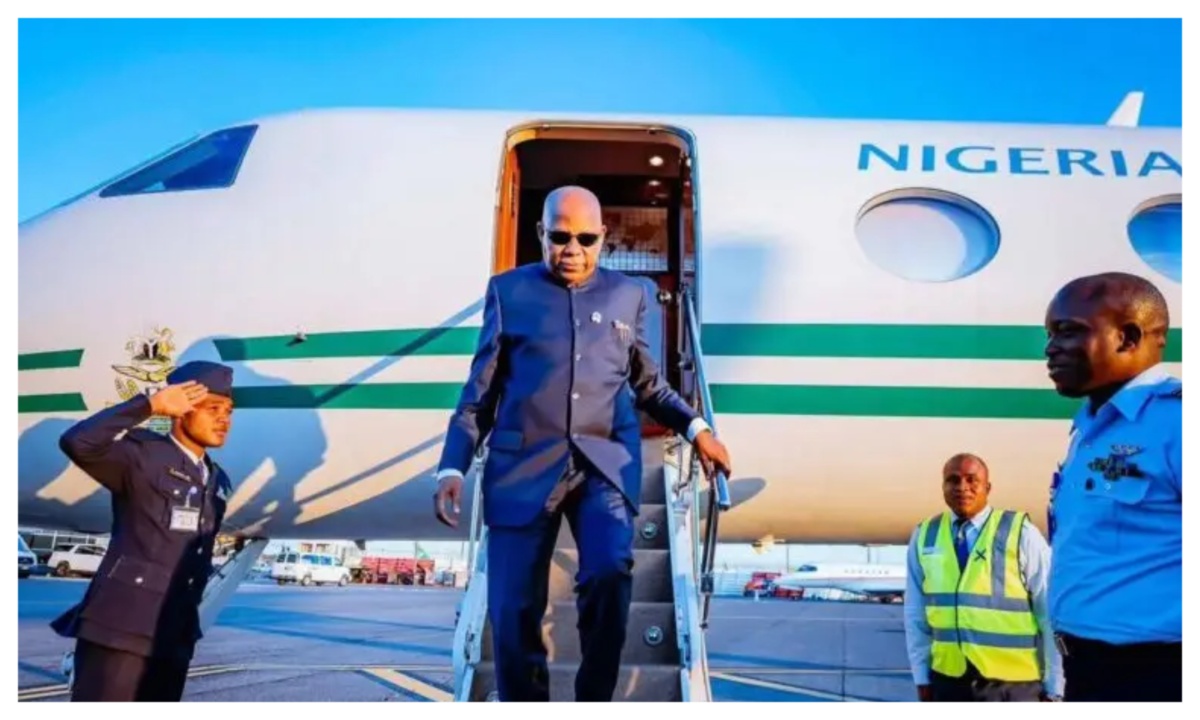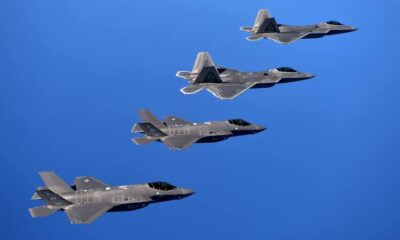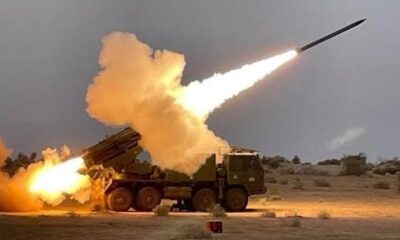International
What is the Strait of Hormuz and why is it so important for oil?
OPEC members Saudi Arabia, Iran, the United Arab Emirates, Kuwait and Iraq export most of their crude via the strait, mainly to Asia.

(BBC) – Iran’s top security body must make the final decision on whether to close the Strait of Hormuz, Iranian TV said on Sunday, after parliament reportedly backed the measure in response to U.S. strikes on several of Tehran’s nuclear sites.Iran has in the past threatened to close the strait but has never followed through on the move, which would restrict trade and impact global oil prices.
Below are details about the strait:
WHAT IS THE STRAIT OF HORMUZ?The strait lies between Oman and Iran and links the Gulf north of it with the Gulf of Oman to the south and the Arabian Sea beyond.It is 21 miles (33 km) wide at its narrowest point, with the shipping lane just 2 miles (3 km) wide in either direction.
WHY DOES IT MATTER?
About a fifth of the world’s total oil consumption passes through the strait. Between the start of 2022 and last month, somewhere between 17.8 million and 20.8 million barrels of crude, condensate and fuels flowed through the strait daily, data from analytics firm Vortexa showed.
OPEC members Saudi Arabia, Iran, the United Arab Emirates, Kuwait and Iraq export most of their crude via the strait, mainly to Asia.
The UAE and Saudi Arabia have sought to find other routes to bypass the strait.
About 2.6 million barrels per day (bpd) of unused capacity from existing UAE and Saudi pipelines could be available to bypass Hormuz, the U.S. Energy Information Administration said in June last year.
Qatar, among the world’s biggest liquefied natural gas exporters, sends almost all of its LNG through the strait.
The U.S. Fifth Fleet, based in Bahrain, is tasked with protecting commercial shipping in the area.
HISTORY OF TENSIONS
In 1973, Arab producers led by Saudi Arabia slapped an oil embargo on Western supporters of Israel in its war with Egypt.
While Western countries were the main buyers of crude produced by the Arab countries at the time, nowadays Asia is the main buyer of OPEC’s crude.
International
BREAKING: Vice President Shettima Arrives in Abidjan for President Ouattara’s Fourth-Term Inauguration

Vice President Kashim Shettima has arrived in Abidjan, Côte d’Ivoire, to represent President Bola Ahmed Tinubu at the swearing-in ceremony of President Alassane Ouattara for his fourth term in office.
The inauguration is scheduled for Monday, 8 December 2025, at the Presidential Palace in Abidjan, where Senator Shettima will join other African heads of state, government leaders, and international dignitaries.
President Ouattara secured re-election in the 25 October 2025 presidential poll, extending his leadership of the West African nation, which enjoys long-standing and robust diplomatic ties with Nigeria.
Upon arrival at Félix-Houphouët-Boigny International Airport, Vice President Shettima was received by Côte d’Ivoire’s Prime Minister, Mr. Robert Mambe; Nigeria’s Chargé d’Affaires in Côte d’Ivoire, Mrs. Item Akpama; and other senior Ivorian and Nigerian officials.
The visit underscores Nigeria’s continued commitment to regional solidarity, democratic governance, and constitutional order in West Africa. It also highlights the strong bilateral partnership between Abuja and Abidjan, anchored on cooperation within ECOWAS and the African Union, the Nigeria-Côte d’Ivoire Bi-National Commission, and multiple sectoral agreements spanning security, trade, agriculture, anti-human trafficking efforts, and the digital economy.
A sizeable Nigerian community in Côte d’Ivoire continues to play a vital role in deepening people-to-people and commercial links between the two countries.Vice President Shettima is expected to return to Abuja immediately after the inauguration ceremony.
Crime
Trump targets anti-Christian violence with new visa crackdown policy on Nigerians

The Trump administration is rolling out a new visa-restriction policy in response to a wave of brutal anti-Christian attacks in Nigeria, targeting those accused of orchestrating religious violence against Christians in the West African nation and around the world.
Secretary of State Marco Rubio announced Wednesday that a new policy in the Immigration and Nationality Act will allow the State Department to deny visas to those “who have directed, authorized, significantly supported, participated in, or carried out violations of religious freedom.” Immediate family members may also face visa restrictions in some cases.
“The United States is taking decisive action in response to the mass killings and violence against Christians by radical Islamic terrorists, Fulani ethnic militias, and other violent actors in Nigeria and beyond,” Rubio said in the statement.
The move follows a surge of attacks on Christians and Christian institutions in Nigeria. Last month, gunmen stormed the Christ Apostolic Church in Eruku, Kwara State, killing two people and kidnapping dozens. The 38 abducted worshipers were freed nearly a week later.
Days later, armed attackers raided St. Mary’s School in Niger State, abducting more than 300 students and staff. School officials said 50 students aged 10 to 18 escaped in the following days, but 253 students and 12 teachers remain captive.
The violence prompted President Donald Trump to designate Nigeria a “country of particular concern,” though the Nigerian government disputes the U.S. assessment.
“I’m really angry about it,” the president told Fox News Radio last month. “What’s happening in Nigeria is a disgrace.”
Rubio said the new visa restrictions will apply to Nigeria and to any other governments or individuals involved in violating religious freedom.
Echoing Trump’s warning, Rubio said: “As President Trump made clear, the ‘United States cannot stand by while such atrocities are happening in Nigeria, and numerous other countries.’”
International
Death toll in Hong Kong fire rises to 44 with 279 still missing, authorities say
Hong Kong authorities say the fires in four of the buildings have been brought under control, but large plumes of smoke are still hanging over the residential estate.

Photo: AFP
At least 44 people have been killed so far in a major fire engulfing public housing apartments in Hong Kong’s Tai Po district, with 279 people not accounted for.
Three construction company executives have been arrested on suspicion of manslaughter connected to flammable materials, including mesh and plastic sheets, that may have allowed the fire to spread quickly.
More than 800 firefighters are tackling the blaze at Wang Fuk Court, which has been burning for over 18 hours.
The fire has been classified a level five blaze, the most serious level in Hong Kong.
A baby and an elderly woman were rescued during a late-night rescue, local media reports.
Hong Kong authorities say the fires in four of the buildings have been brought under control, but large plumes of smoke are still hanging over the residential estate.
I can smell it in the air. I can also see a number of small fires still burning in the apartment blocks.
Even more fire engines and an ambulance have arrived this morning to help with rescue efforts
BBC.
-

 Business1 day ago
Business1 day agoBUA Group’s Long Service Awards: Rabiu Splashes N30bn on Staff (Video)
-

 News3 hours ago
News3 hours agoSupreme Court rules Tinubu has the constitutional power to declare a state of emergency
-

 Business3 days ago
Business3 days agoGTCO Unveils First-Ever Holiday Edition of Food & Drink Festival, Scheduled for December 20–21, 2025
-

 News2 days ago
News2 days agoBotswana, Nigeria Explore Deeper Collaboration in Livestock Development (Photos)
-

 Business10 hours ago
Business10 hours agoHow To Maintain Electricity Availability in 2026 – CPPE
-

 Sports10 hours ago
Sports10 hours agoAFCON 2025: Super Eagles hit the ground running in Cairo training camp
-

 Sports2 days ago
Sports2 days agoFans vandalise Indian stadium after Messi’s abrupt exit
-

 News1 day ago
News1 day agoBREAKING: Private Jet crash Lands in Kano (Video)











